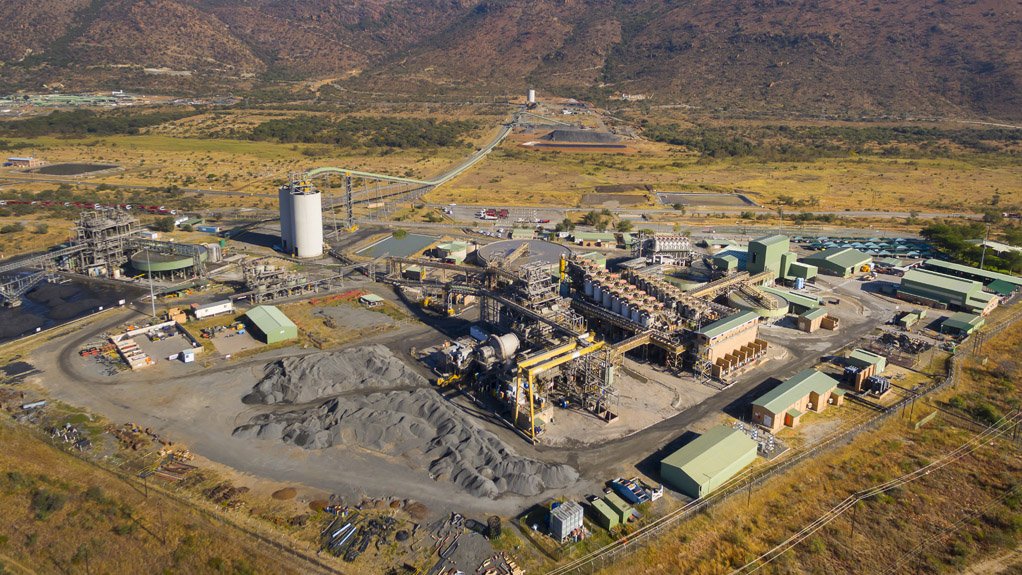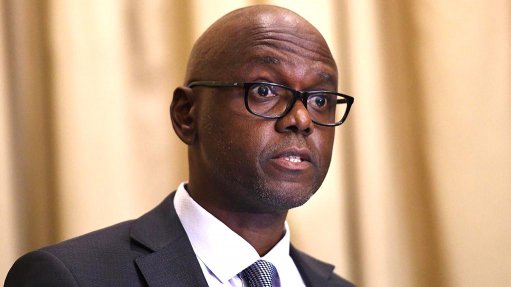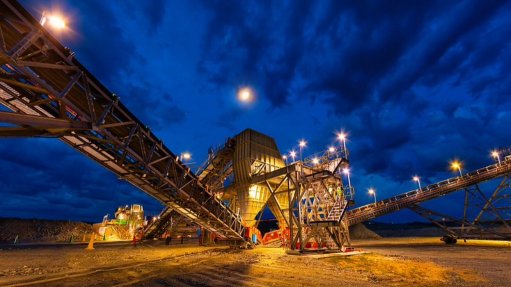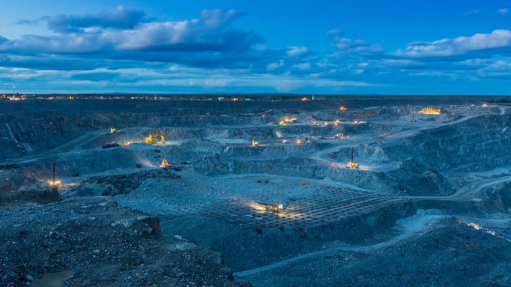PGM miners overcoming challenges to build new mines
South African platinum group metal (PGM) miners are overcoming challenges and building new mines locally, albeit in phases, to derisk some of these promising tier-one projects.
PGM mining industry leaders, participating in a panel discussion as part of the PGMs Industry Day conference on April 10, highlighted that costs per ounce were a significant focus, and that these were in addition to challenges, namely electricity shortages and logistics bottlenecks, facing all South African real economy companies.
"If costs sit in the lower half of the cost curve, then a project should be able to ride the waves [of commodity cycles]. However, the current environment calls for responsible and disciplined deployment of cash, which is the position we find ourselves in [at the Modikwa, Two Rivers and Nkomati mines]," said diversified miner African Rainbow Minerals (ARM) Platinum CE Thando Mkatshana.
The Two Rivers platinum mine has been the company's flagship PGMs operation for many years. It is a mechanised operation mining the Upper Group 2 reef (UG2) and sits in a favourable position on the cost curve, he said.
Three years ago, the company saw an opportunity to navigate through challenges, including the declining grade at Two Rivers.
"We are now finishing these projects, but we are taking a responsible approach, including planning to slow down the developments in such a way that they can be ramped up when the market turns.
"We are building a Noah's Ark so that, when the cycle turns, we are able to bring these operations back to life quickly. In the meantime, they are carrying on and are well positioned until such time," he said.
ARM Platinum also acquired the Bokoni mine from Anglo American Platinum two years ago. This is a high-quality asset with high-grade potential from UG2, which provides an opportunity to develop a good tier-one operation, Mkatshana said.
However, given the current market, the company is looking to phase it in.
"We did start some of the initial phases last year, and have started to develop a 60 000 t a month operation, albeit mainly to manage the maintenance costs of the mine. At this stage, the project is not sustainable and needs to double production and then ramp up to about 220 000 t a month.
"In this context, ARM Platinum is focused on spending cash in a disciplined and responsible way, and we are using the existing infrastructure as much as possible. Despite these challenges, the asset has a huge orebody with the potential to ramp up to much higher volumes," said Mkatshana.
Additionally, Bokoni and the Merensky reef historically have had a lot of geological challenges. ARM Platinum plans to mine the UG2, which is a tabular orebody with a steep dip.
However, the company has developed a mine plan and its team is highly experienced.
"We will deploy a mechanised mining method there. In June, we plan to deploy mechanised mining equipment and start mining. We have given ourselves a year to prove the concept," Mkatshana said.
Meanwhile, diversified energy metals-focused mining company Ivanhoe Mines president Marna Cloete said the company was using its experience from building the Kamoa-Kakula Copper Complex, in the Democratic Republic of Congo, to approach its investment in the Platreef PGMs/nickel mine, in Limpopo, South Africa.
"To derisk the Platreef project, we are developing it in phases. Phase 1 will enter production next year and then ramp up quickly to Phase 2, which will result in production of more than 400 000 oz/y. The third phase is expected to produce close to one-million ounces a year from this one mining complex," she said.
However, the Platreef project must be mined at scale. Phase 1 was never meant to be the ultimate plan, but a phased approach helps to derisk the project, as the company will get to know the metallurgy, the orebody and the geotechnical details of the project, she noted.
Ivanhoe made the decision to develop the Platreef project in 2011 on the basis that it is a large orebody, can be mined mechanically and would sit in the lower quartile of costs.
"We believe that there is space for every commodity, including PGMs, as the world will not transition [to sustainable energy] overnight . . . There is a bright future for PGMs, and this is why we are building the project. We believe it will be one of our flagship assets that will be producing in South Africa in the next year," said Cloete.
Meanwhile, neither pricing of commodities nor capital funding is holding back PGM projects, although they do introduce challenges. What is holding back projects is logistics and energy costs, said Canada and South Africa platinum and palladium miner Platinum Group Metals finance executive Schalk Engelbrecht.
"When South Africa built many mines, it was simpler to get money for the project and offtake will be there once the project is online. This is no longer the case, and we have been working hard since 2019 to secure offtake.
"Further, one of the reasons we are pursuing the possibility of building a smelter in Saudi Arabia is because of how the economics work. Electricity costs make up about 30% to 40% of a smelter's operating costs and, if you are in a region where electricity is significantly cheaper, you immediately get a 20% to 30% reduction in operating costs," he explained.
First prize remains securing local offtake, but 130 000 t of concentrate will find a place somewhere, he said.
Further, while the Bengwenyama project, which is near Two Rivers and Modikwa and is being developed by ASX- and JSE-listed Southern Palladium, presents the opportunity to develop a tier-one project with an orebody depth of 500 m and an operating life of 36 years, the challenges facing the company include energy and logistics constraints, crime and some regulatory challenges, said Southern Palladium nonexecutive chairperson and former Minerals Council South Africa CEO Roger Baxter.
"The project economics have improved following the detailed scoping study and we are busy with a prefeasibility study (PFS) currently. We expect the project to deliver $1-billion in pre-tax earnings before interest, taxes, depreciation and amortisation.
"The project is very developable and attractive, but the difficulties and opportunities are the same as developing other PGM projects in South Africa," he said.
Additionally, tier-one assets are important to enable mining projects to manage commodity cycles, and loadshedding presents a challenge to raising capital internationally, added Baxter.
"Having 14 days without loadshedding is helpful, and if we can get 30 days, 60 days to 90 days without loadshedding, this will help our cause when we go to the investment marketplace," he noted.
He noted that the company should complete the PFS for the Bengwenyama project by the end of October.
Meanwhile, while South Africa retains the capability to build new PGM mines and complete large mining projects, competition for mining skills with the DRC, Zambia and, more recently, the United Arab Emirates, will mean that companies must be prepared to pay top dollar to entice these skilled people back, highlighted Mkatshana.
Further, logistical challenges are also present, and most original-equipment manufacturers are risk-averse. Items that normally take eight months to be delivered can take an extra three to four months, and attract an extra 20% in insurance for risk coverage. This means it takes a long time to deliver on projects, he noted.
"There are opportunities, but it is challenging. While South Africa has the capabilities, it is not going to be at normal costs," he emphasised.
"No one is developing small platinum mines in South Africa," said engineering multinational DRA Global CEO and MD James Smith.
Since the Global Financial Crisis of 2008, and the massive decrease in the platinum price from $2 700/oz, companies are focusing on ensuring that they do not bring in higher cost ounces, and discipline, said Baxter.
"However, market cycles will have a big impact on the future drive in the industry and constraints in South Africa must be overcome, and there have been some positive results in this space, to reduce the risk profile and get the industry going," he said.
Comments
Press Office
Announcements
What's On
Subscribe to improve your user experience...
Option 1 (equivalent of R125 a month):
Receive a weekly copy of Creamer Media's Engineering News & Mining Weekly magazine
(print copy for those in South Africa and e-magazine for those outside of South Africa)
Receive daily email newsletters
Access to full search results
Access archive of magazine back copies
Access to Projects in Progress
Access to ONE Research Report of your choice in PDF format
Option 2 (equivalent of R375 a month):
All benefits from Option 1
PLUS
Access to Creamer Media's Research Channel Africa for ALL Research Reports, in PDF format, on various industrial and mining sectors
including Electricity; Water; Energy Transition; Hydrogen; Roads, Rail and Ports; Coal; Gold; Platinum; Battery Metals; etc.
Already a subscriber?
Forgotten your password?
Receive weekly copy of Creamer Media's Engineering News & Mining Weekly magazine (print copy for those in South Africa and e-magazine for those outside of South Africa)
➕
Recieve daily email newsletters
➕
Access to full search results
➕
Access archive of magazine back copies
➕
Access to Projects in Progress
➕
Access to ONE Research Report of your choice in PDF format
RESEARCH CHANNEL AFRICA
R4500 (equivalent of R375 a month)
SUBSCRIBEAll benefits from Option 1
➕
Access to Creamer Media's Research Channel Africa for ALL Research Reports on various industrial and mining sectors, in PDF format, including on:
Electricity
➕
Water
➕
Energy Transition
➕
Hydrogen
➕
Roads, Rail and Ports
➕
Coal
➕
Gold
➕
Platinum
➕
Battery Metals
➕
etc.
Receive all benefits from Option 1 or Option 2 delivered to numerous people at your company
➕
Multiple User names and Passwords for simultaneous log-ins
➕
Intranet integration access to all in your organisation





















